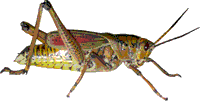Entomology Collections, General

Entomology Papers from Other Sources
Document Type
Article
Date of this Version
1997
Abstract
Communal oviposition in the Afrotropical blackfly species complex Simulium damnosum Theobald (Diptera: Simuliidae) is mediated by a pheromone emitted by freshly laid eggs. Previously, two compounds (designated peaks A and B) emanating from fresh eggs were shown to be associated with attractiveness to gravid blackflies in bioassay. The present study investigated the role of these compounds by testing the responses of wild-caught Simulium yahense in Ghana to fractionated hexane extracts of gravid ovaries prepared by gas chromatography (GC). Although the fractions were prepared from Sierra Leonean Simulium teonense, GC analysis of the emissions from fresh S. yahense eggs showed that the volatile blends of both species were similar. When tested in a two-choice bioassay, 66% of ovipositing blackflies chose the substrate baited with a mixture of the four fractions recombined. In a series of bioassays testing responses to the four individual fractions presented with a control in a multiple-choice arrangement, only fraction 3 (containing peaks A and B) attracted significantly more ovipositions than the other fractions and control. However, fraction 3 failed to elicit a significant response when presented as the sole attractant with a control in a two-choice bioassay. It was concluded that fraction 3, though mainly responsible for mediating aggregated oviposition by S. yahense, was acting in tandem with additional cues, probably further chemicals, which remain to be isolated and characterized.


Comments
Published in Physiological Entomology (1997) 22, 224-230.